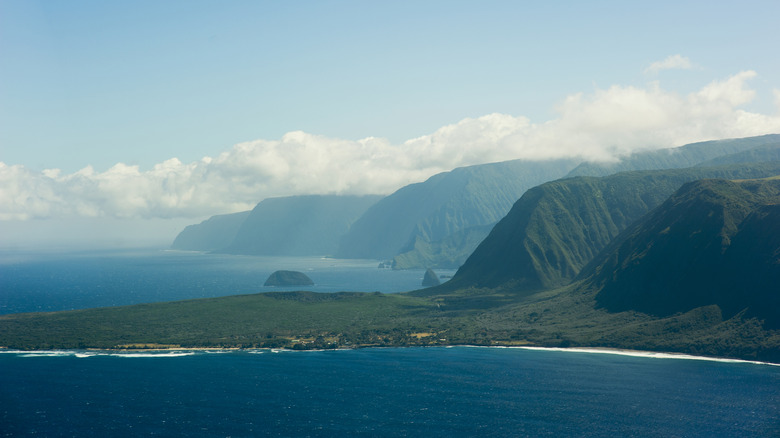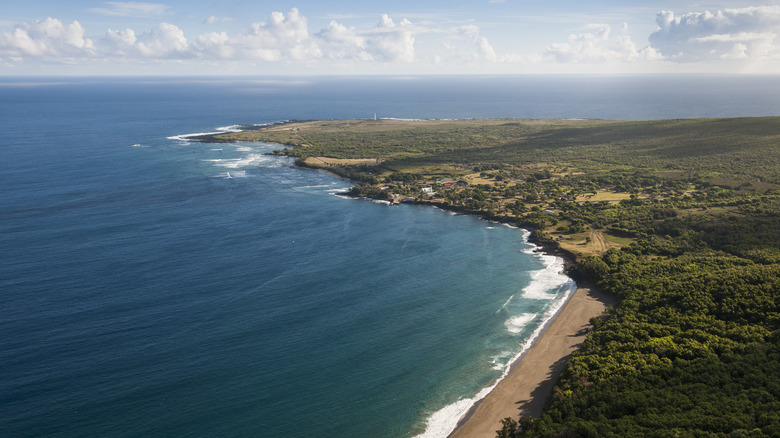This Beautiful National Park In Hawaii Is One You'll Likely Never Get The Chance To See
The Hawaiian islands are home to some remarkable attractions, like the Kalaupapa Peninsula on Moloka'i. Similar to the scary reason so many iconic Hawaiian hikes are illegal, the Kalaupapa region is hard to reach due to its chilling history and impermeable natural surroundings. With cliffs raised 2,000 feet above the sea, the peninsula is separated from the rest of the island by extreme terrain. There are no roads that go into the area, and the access hiking trail is currently closed. The only way to get there is by aircraft, but that's not the only reason why you probably won't get to visit.
Hansen's disease, commonly known as leprosy, is a long-term bacterial infection curable with drugs. We now know it's not very contagious, but historically, it was associated with a deep social stigma. People suffering from the disease were separated from their families and sent away to prevent the disease from spreading. When leprosy was introduced to Hawaii in the late 1800s, all affected people were sent to Kalaupapa. In the years following, more than 8,000 patient-residents would live and die on the isolated peninsula.
The colony was created on this part of Moloka'i, a quiet Hawaiian island with striking cliffside views, because the peninsula is surrounded by a rugged coastline and towering mountains, making it an extremely remote location. Despite the isolation, a handful of residents still live in Kalaupapa today, and the Hawaii State Department of Health administers the entire county.
Access to Kalaupapa National Historical Park
Kalaupapa National Historical Park was established in 1980 to protect the area's history and natural resources. The park restricts boat access and has implemented a special permit system. No more than 100 visitors per day are allowed, folks under 16 cannot enter, and photographs of patient-residents are not authorized without permission. Many of these limitations were created at the request of residents to protect their privacy and community. There are also no medical, shopping, or dining facilities.
Before the COVID-19 pandemic, several companies offered tours of Kalaupapa, which were partly owned by local residents. These official tours offered a way to enter the park, coming in by mule train or airplane. However, the tours were shut down during the pandemic and have not reopened. The park website notes that they are working to address the lack of public access, but no guides are presently available. Today, all visitors must have a permit from the Hawaii State Department of Health, and they are only given to residents or their guests.
If you plan on visiting Hawaii soon, you probably won't be able to arrange a tour of Kalaupapa. But, it is possible to catch a glimpse of the peninsula from an overlook at Pālā'au State Park on Moloka'i. The overlook has a small concrete footpath on the mountain's edge, and from this point, you'll have a striking view of the entire peninsula and settlement. If you still want to see a remote natural element, visit the Hi'ilawe waterfall to experience one of Hawaii's most powerful and secluded cascades.

